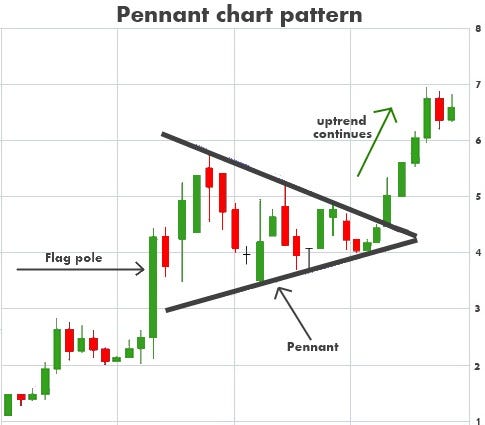20 Excellent Tips For Choosing AI Stock Analysing Sites
20 Excellent Tips For Choosing AI Stock Analysing Sites
Blog Article
Top 10 Tips To Assess The Market Coverage Provided By Ai Trading Platforms That Predict/Analyze The Performance Of Stocks.
When evaluating AI trading platforms that can predict or analyze the market, coverage of the stock is an important factor to think about. It determines what assets and markets are accessible. Platforms with extensive market coverage let you diversify and explore global opportunities and also adapt to various trading strategies. Here are the top ten tips to assess the market coverage offered by these platforms:
1. Evaluate Supported Asset Classes
Stocks - Make sure you are connected to major stock exchanges, such as NYSE and NASDAQ. Additionally, make sure that your platform has small-caps and mid-caps.
ETFs. Make sure the platform has a wide selection of ETFs so you can gain exposure to a variety of.
Options and Futures: Find out whether the platform is compatible with derivatives, such as options, futures and other products that leverage.
The commodities and forex market: Check if the platform includes the forex pair, precious metals, energy commodities as well as agricultural commodities.
Cryptocurrencies: Verify if the platform works with major cryptocurrencies, such as Bitcoin and Ethereum and other currencies.
2. Check coverage of your area
Global markets: Make sure that the platform covers all major international markets, such as North America, Europe, Asia-Pacific, and emerging markets.
Regional focus: Find out whether your platform has a distinct market or market that aligns with your trading needs.
Local exchanges: Find out whether the platform is compatible with regional or local exchanges that relate to your specific location or plan.
3. Delayed Data Vs. Data that is delayed
Real-time Market Data: The system should offer real-time trading information that allows for quick decision-making.
Data that is delayed - Determine if delayed data is free or is available at a lower cost. This could be enough to investors who want to invest in the long term.
Data latency: Check if the platform minimizes the latency of real-time data feeds specifically for high-frequency trading.
4. Examine the historical data availability
The depth of the historical data: Ensure the platform offers vast historical data (e.g., 10+ years) to backtest and analyze.
Granularity: Check if historical data contains daily, intraday, weekly, and monthly the granularity.
Corporate actions: Make sure that the historical data includes dividends and splits of stock.
5. Review for market depth and order information
Platforms must provide Level 2 data (order-book depth) to help improve price search and execution.
Make sure that your platform displays live price spreads.
Volume data - Determine if the platform provides extensive volume data to analyze market activities and liquidity.
6. Review the extent of coverage for Indices and Sectors
Major indices: Make sure the platform covers major indices (e.g., S&P 500, NASDAQ 100, FTSE 100) to benchmark and index-based strategies.
Sector-specific data : Find out if your platform contains data that is specific to particular sectors (e.g. technology, healthcare and energy) which allows you to conduct targeted analyses.
Custom-designed indices. Verify that the platform supports creating and tracking custom indices according to your criteria.
7. Evaluation of the integration with News and Sentiment data
News feeds - Make sure your platform includes real-time, market-moving news feeds (e.g. Bloomberg, Reuters).
Use the tool's sentiment analysis using data from news, social media or any other source.
Event-driven strategies (e.g. earnings announcements or economic reports): Check if your platform allows trading strategies that are based on news events.
8. Check for Multi-Market Trading Capabilities
Cross-market Trading: Check that the platform allows you to trade across multiple asset classes and markets from an unifying interface.
Conversion to currencies: Make sure the platform supports multi-currency as well as automated conversion of currencies to facilitate international trade.
Support for time zones: Check that your platform supports the ability to trade in multiple time zones.
9. Review Alternative Data Sources
Alternative data - Examine to determine if there are alternative data sources integrated into the platform (e.g. web traffic, satellite imagery or transactions with credit cards). This will provide you unique insight.
ESG data. Verify whether the platform has socio-economic, environmental and governance information for socially accountable investing.
Macroeconomic data: Ensure that the platform has macroeconomic indicators that can be used to analyze fundamental issues (e.g. GDP and inflation rates, as well as rate of interest).
10. Review User Feedback and Market Reputation
User reviews: Examine the feedback of users to evaluate the platform's market coverage Usability, reliability, and coverage.
Examine the platform's reputation. This includes awards and recognition by experts in the field.
Case studies: Look for case studies, testimonials and other information that highlights the platform's effectiveness on specific market segments or asset types.
Bonus Tips
Trial period: You may try the demo, trial, or a free trial to check the coverage of markets as well as data quality.
API access - Check if the API can be used to gain access to data from the market programmatically.
Support for customers: Make sure whether the platform has assistance for questions related to data or markets.
These suggestions will allow you to assess the market coverage provided by AI trading platforms that forecast or analyze stock prices. This way you'll be able to select the platform that offers the information and markets that you require for successful trading. Market coverage is important to diversify portfolios, discover new opportunities and to adapt to changing market conditions. Follow the recommended more on ai trading platform for website advice including ai stocks to invest in, best ai stocks to buy, investing ai, ai bots for trading, ai trading bots, best ai trading app, ai stock trader, ai trade, ai stock trading app, ai stock trading and more.
Top 10 Tips To Evaluate The Up-To-Dates And Maintenance Of Ai Stock Predicting/Analyzing Platforms
The maintenance and updates of AI stock prediction and trading platforms are critical for ensuring they are safe, effective, and in alignment with the evolving market conditions. Here are 10 top tips for evaluating their updating and maintenance methods.
1. Updates Frequency
Tips: Make sure you know how frequently the platform releases updates (e.g. weekly, monthly, quarterly).
The reason: Regular updates reveal an active and receptiveness to market trends.
2. Transparency is the key to the Release Notes
Tip: Read the release notes for your platform to find out about any updates or changes.
Transparent release notes indicate that the platform is committed to ongoing improvement.
3. AI Model Retraining Schedule
Tips: Find out how often the AI models are trained by using fresh data.
The reason: As markets shift, models need to adapt in order to remain accurate and relevant.
4. Bug fixes, Issue Resolution
Tips: Find out how quickly the platform responds to issues or bugs that users submit.
Reason: Rapid bug fixes help ensure the platform's reliability and functionality.
5. Security Updates
Tips: Check if the platform frequently updates its security protocols in order to protect the privacy of traders and data.
Security is a must for the financial industry to avoid breaches and fraud.
6. Integration of New Features
Tip - Check if a platform has added new features (e.g. advanced analytics, new sources of data) on the basis of the feedback of users and/or market trends.
The reason: New features show responsiveness and innovation to user demands.
7. Backward Compatibility
Tip : Make sure updates do not disrupt functionality that is already in place or require significant changes to the configuration.
Why is that? Backward compatibility is essential to provide smooth user interface transitions.
8. Communication between the User and Maintenance Personnel
It is possible to evaluate the transmission of maintenance schedules or downtimes to users.
The reason: A clear and concise communication can minimize interruptions and help build trust.
9. Performance Monitoring and Optimization
Tips: Make sure that the platform monitors its the performance metrics (e.g. latency, latency and accuracy) and optimizes its systems.
Why: Continuous optimization is vital to ensure that the platform remains efficient.
10. Compliance with Regulatory Changes
Check whether the features and policies of the platform have been updated to comply with the new financial regulations or privacy laws for data.
Why: The compliance with regulations is essential to ensure confidence in the user and minimize legal risks.
Bonus Tip - User Feedback Integration
Check that the platform is actively incorporating user feedback into updates and maintenance. This shows a user-centric approach and dedication to continuous improvement.
You can evaluate these aspects to make sure you are choosing a platform for AI stock predictions and trading that is up to the minute, well-maintained and capable of adapting itself to the changing dynamics of the market. Read the top rated right here for stocks ai for more examples including best ai stocks to buy now, ai stock trading app, artificial intelligence stocks, ai coin price prediction, trader ai intal, ai investment platform, best ai stocks, ai coin price prediction, ai stock prediction, ai copyright trading and more.